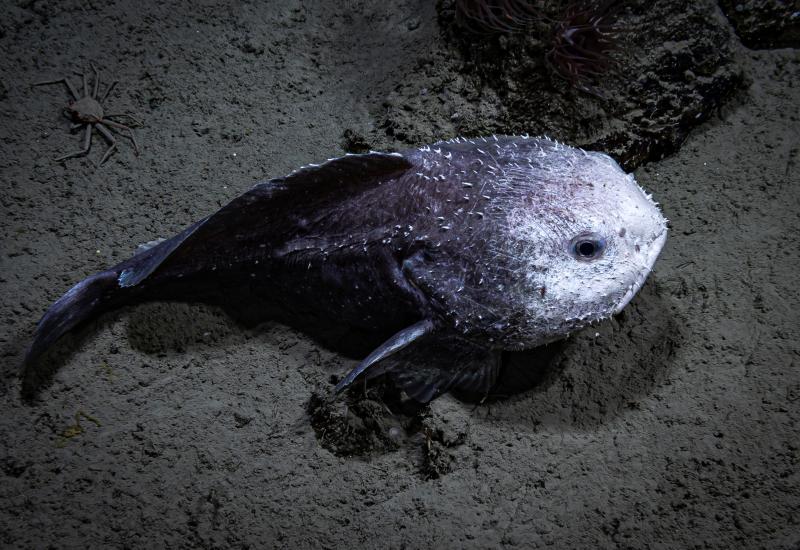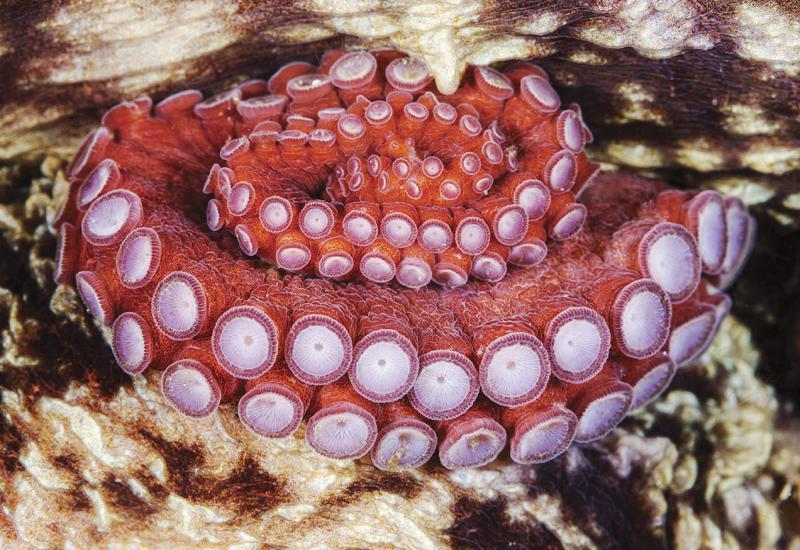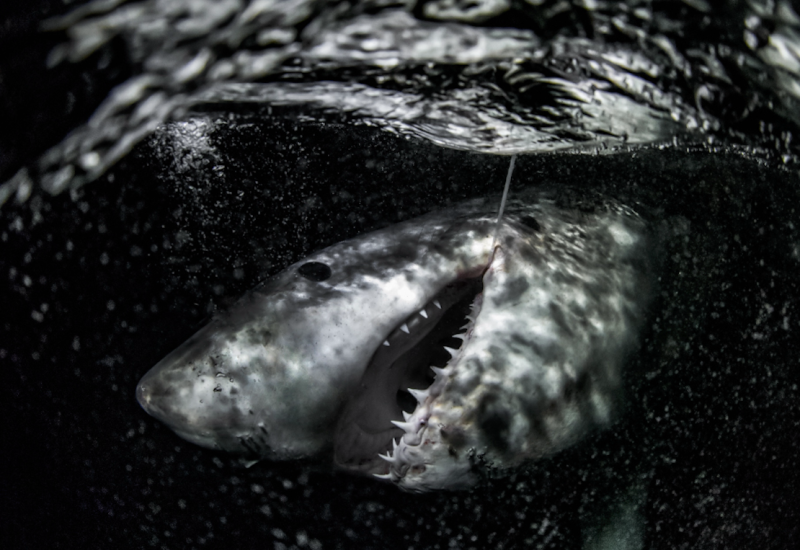Shooting Crustaceans: How to Get Stunning Underwater Images
Crustaceans are fascinating creatures that you can find in almost every corner of the ocean. Scuttling busily around the reef, sheltering until night-time or at home amongst coral heads, they’re everywhere. From hermit crabs to shrimp and lobsters, they are great underwater photography subjects. Capturing their intricate details can be challenging, especially since they are often small and elusive. Here are some tips and techniques for getting up close with crustaceans and taking stunning underwater photos.
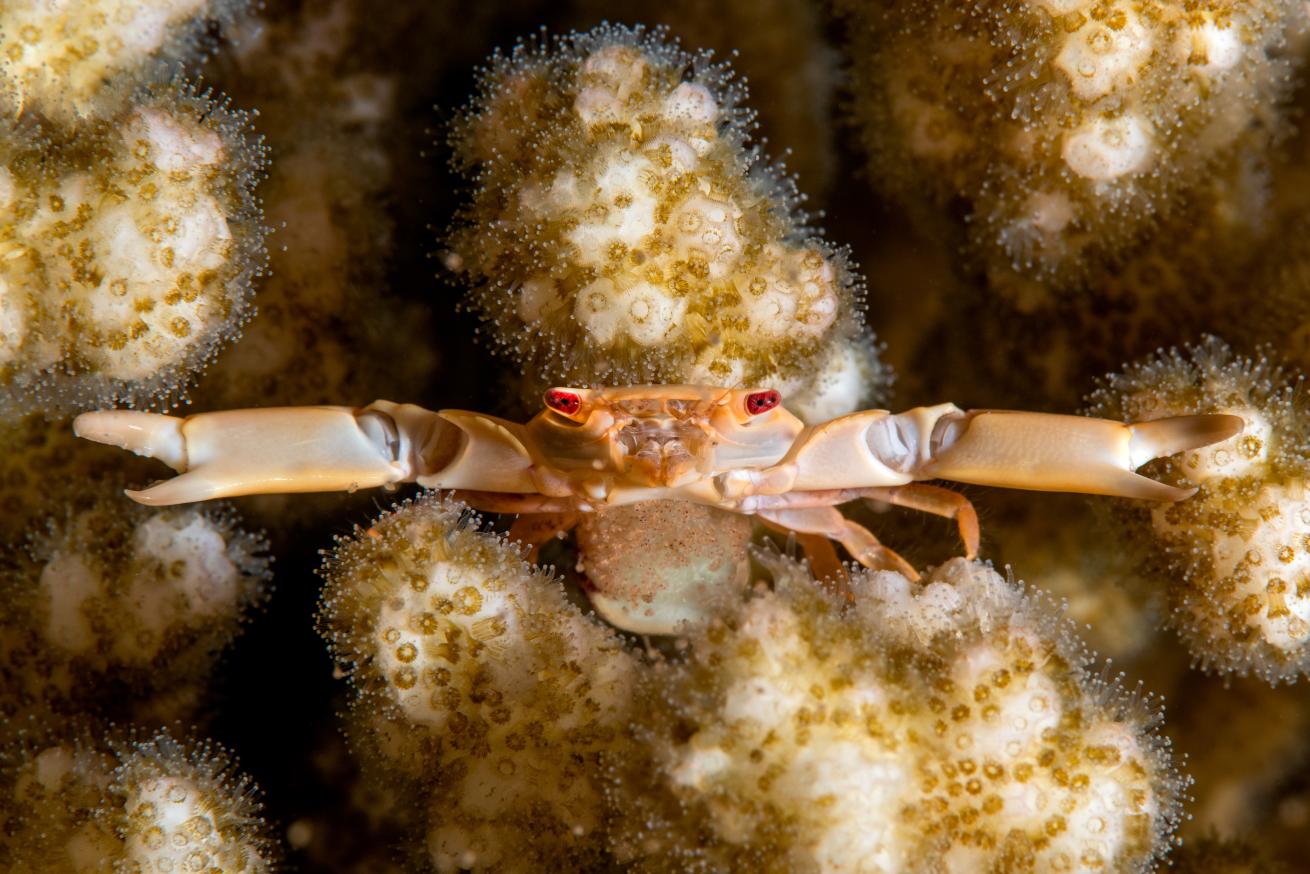
Richard AspinallThis female coral crab is releasing her young into the plankton.
Macro Mania
To capture the fine details of crustaceans, it is recommended you use a macro lens or select the macro setting on your compact. Macro lenses allow you to get very close to the subject. You need to determine which part of the animal will be in focus, as macro lenses have limited or shallow depth of field. Put simply, this means objects in front of and behind the focus point will be blurred. You can limit this by using a very narrow aperture or a high F-stop number (f/11 or higher,) which increases the depth of field.
With a wider aperture, such as f/2.8, you can embrace the blur. The subject will creatively stand out and won’t be cluttered by distracting details in front and behind. I tend to shoot at around 250/sec, f/22 at ISO 200 when taking macro shots with my Nikkor 105mm lens. I adjust the output of my strobes manually.
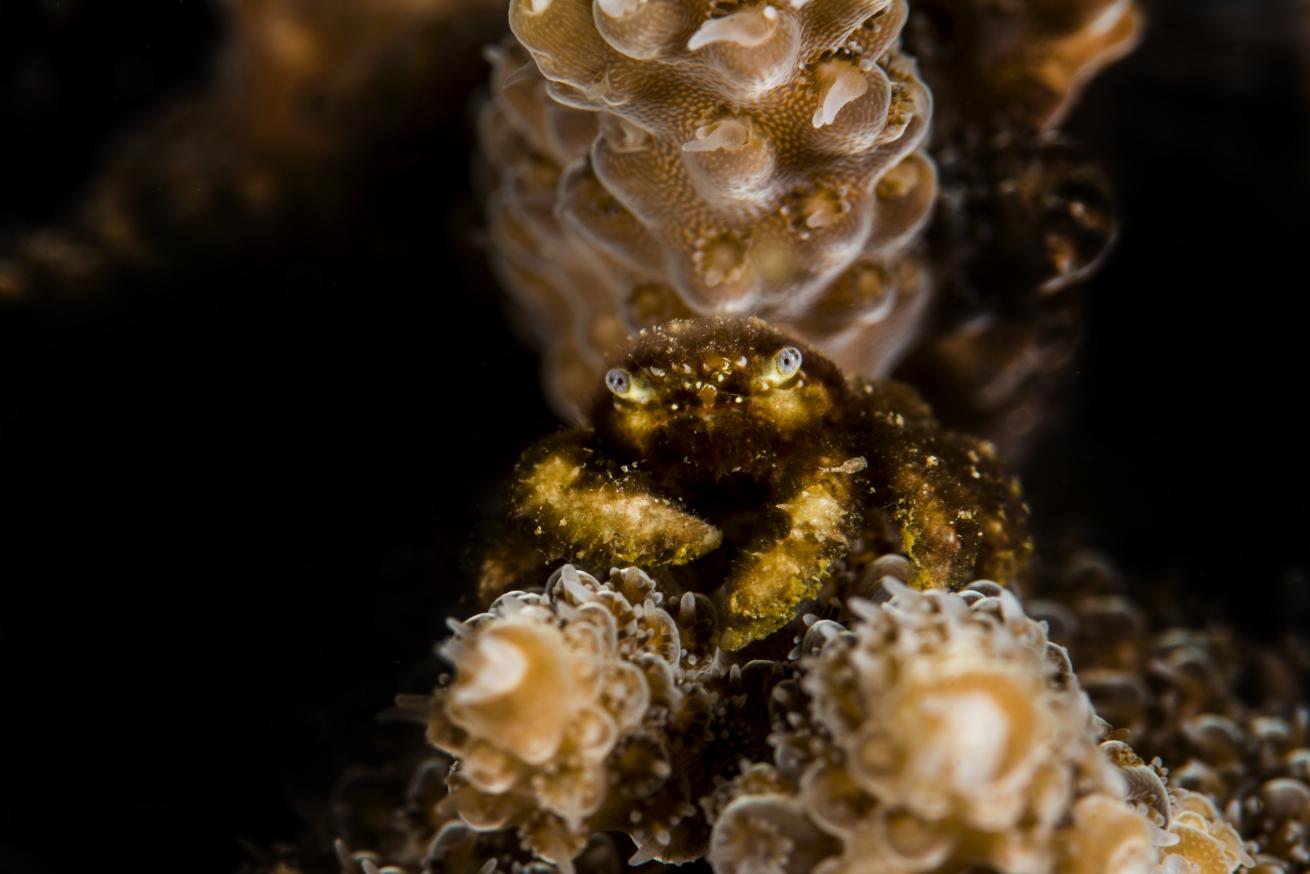
Richard AspinallIn general, focusing on the eyes is best.
Macro settings on compacts don’t quite work the same way, but the setting tells the camera that you will be focusing close up. Though manual mode gives you the most control, modern compacts have excellent close-focusing abilities. Hot tip: focus on the eyes!
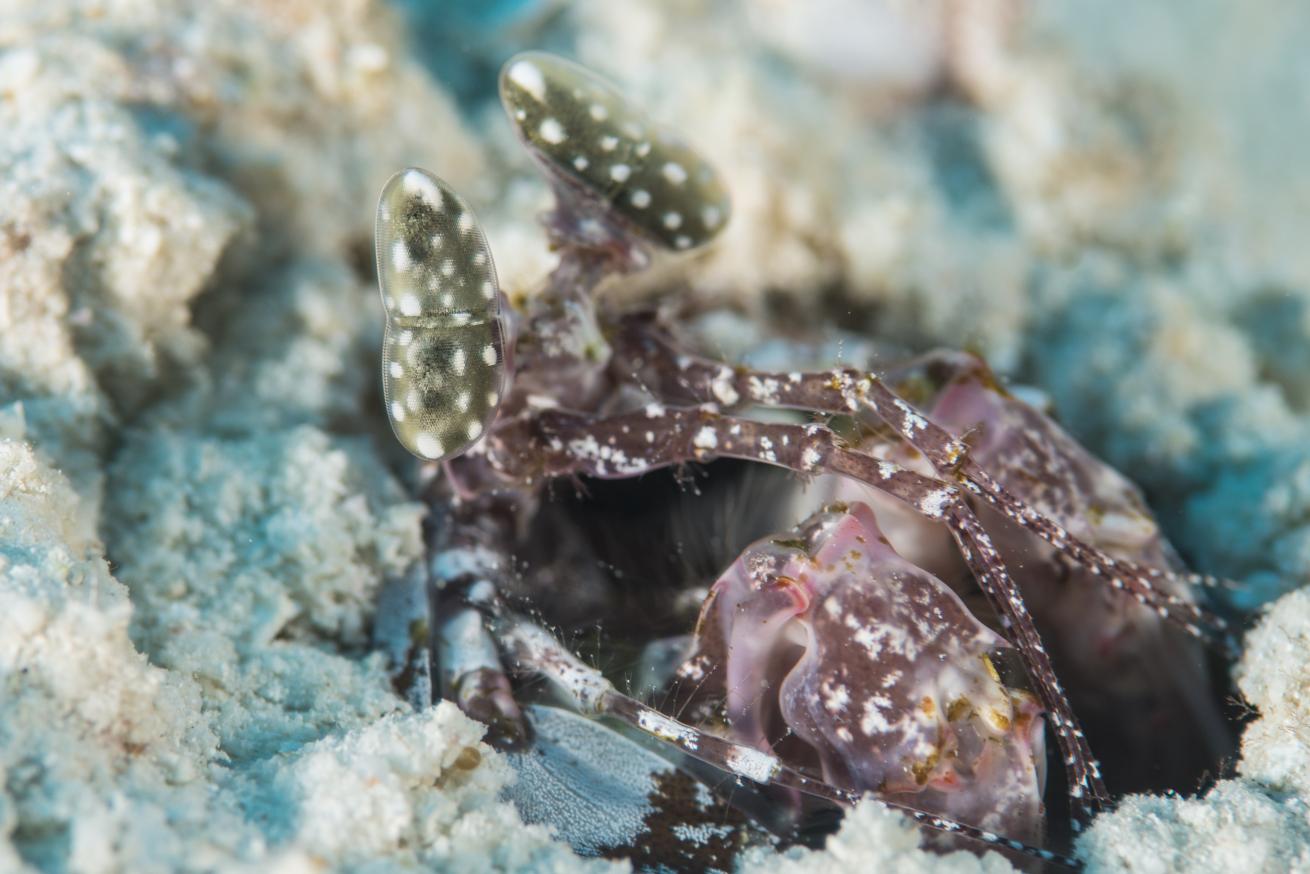
Richard AspinallWith this mantis shrimp, I focused on the nearest eye, revealing very fine detail.
Tips for Photographing Different Crustaceans
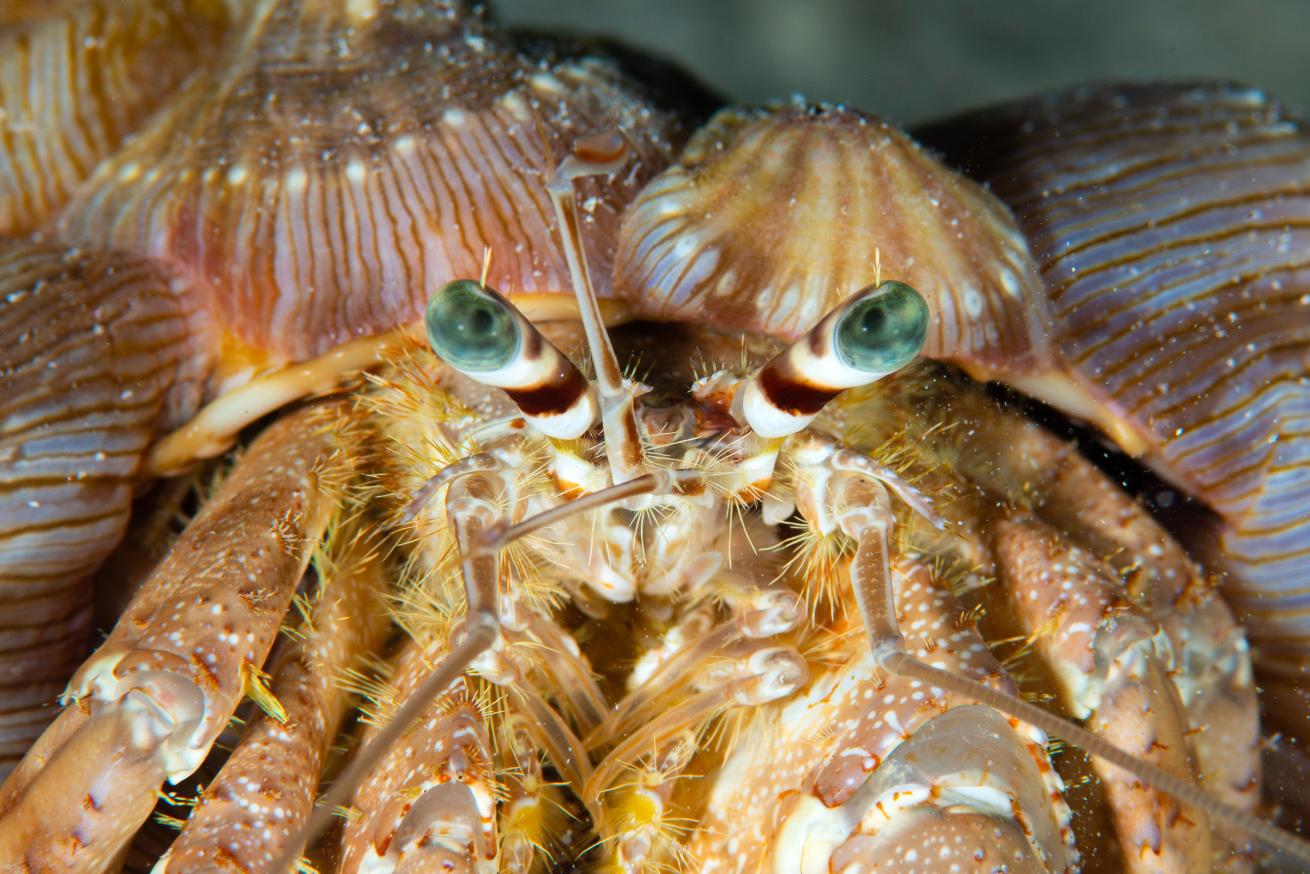
Richard AspinallImage of a hermit crab
Hermit Crabs
One of my favorite crustacean groups is the hermit crabs. The large ones make good practice subjects and are easy to approach, allowing you to get in close to capture fine details, such as their eyes and antenna.
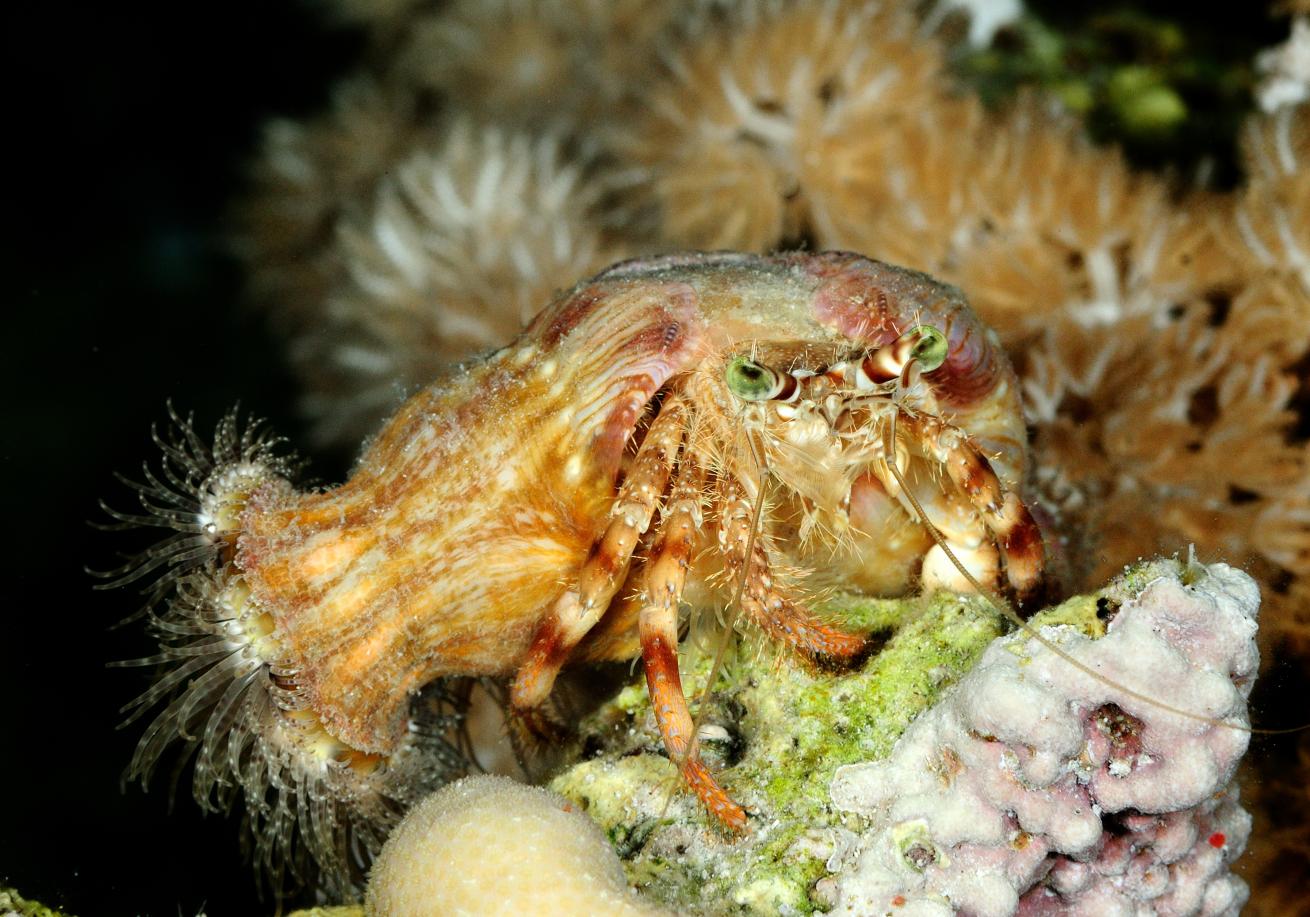
Richard AspinallThis anemone-carrying hermit crab in the Red Sea is an easy macro subject.
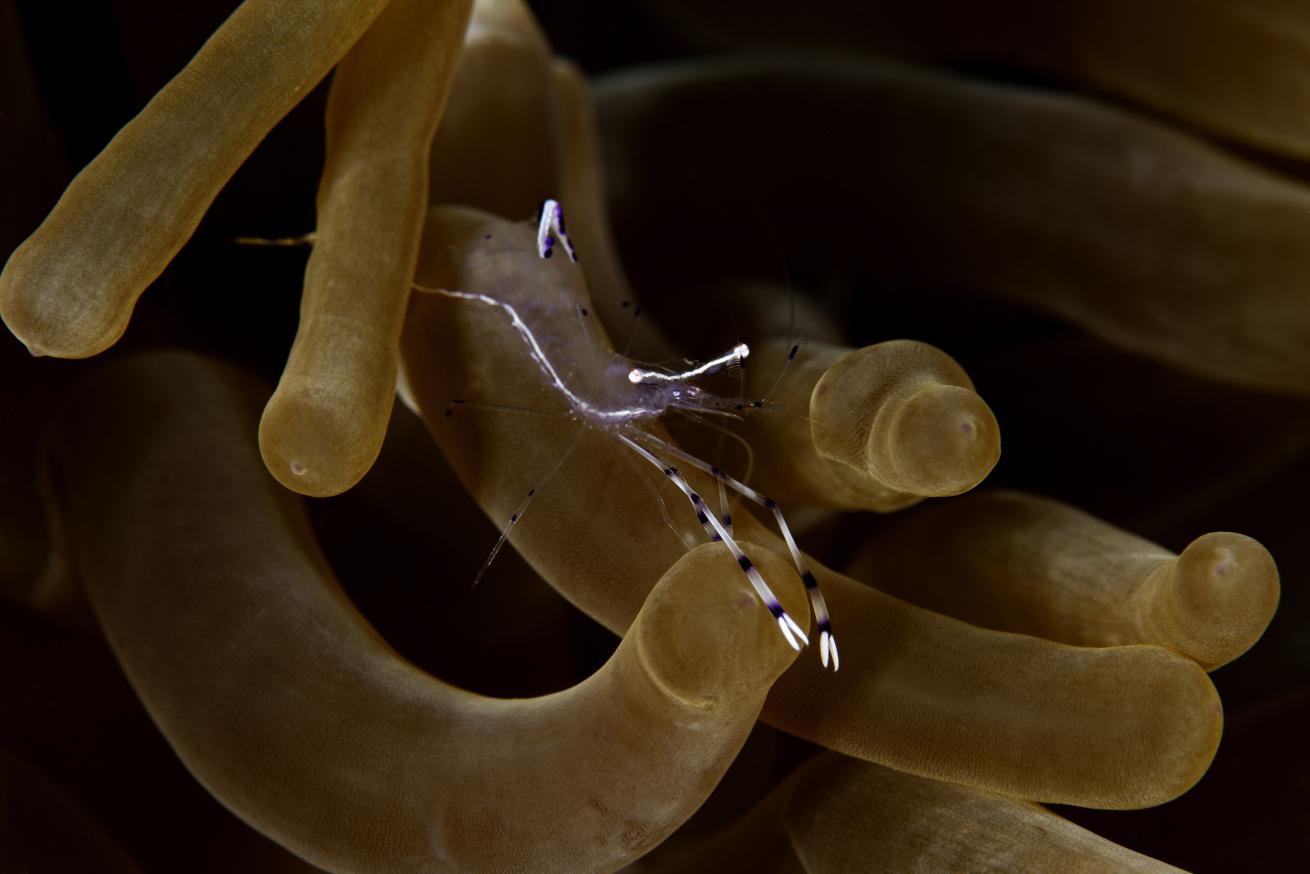
Richard AspinallCrustaceans often hide in places, such as this shrimp in an anemone.
Shrimp
Look close, or you might miss them! Much harder to capture are the small shrimps that live within anemones. Focusing on tiny animals inside a moving subject is always challenging underwater. Again, try focusing on the eye, and set a high f-number to get as much detail as possible. Freezing movement with a fast shutter speed and flash will help you obtain a crisp shot.
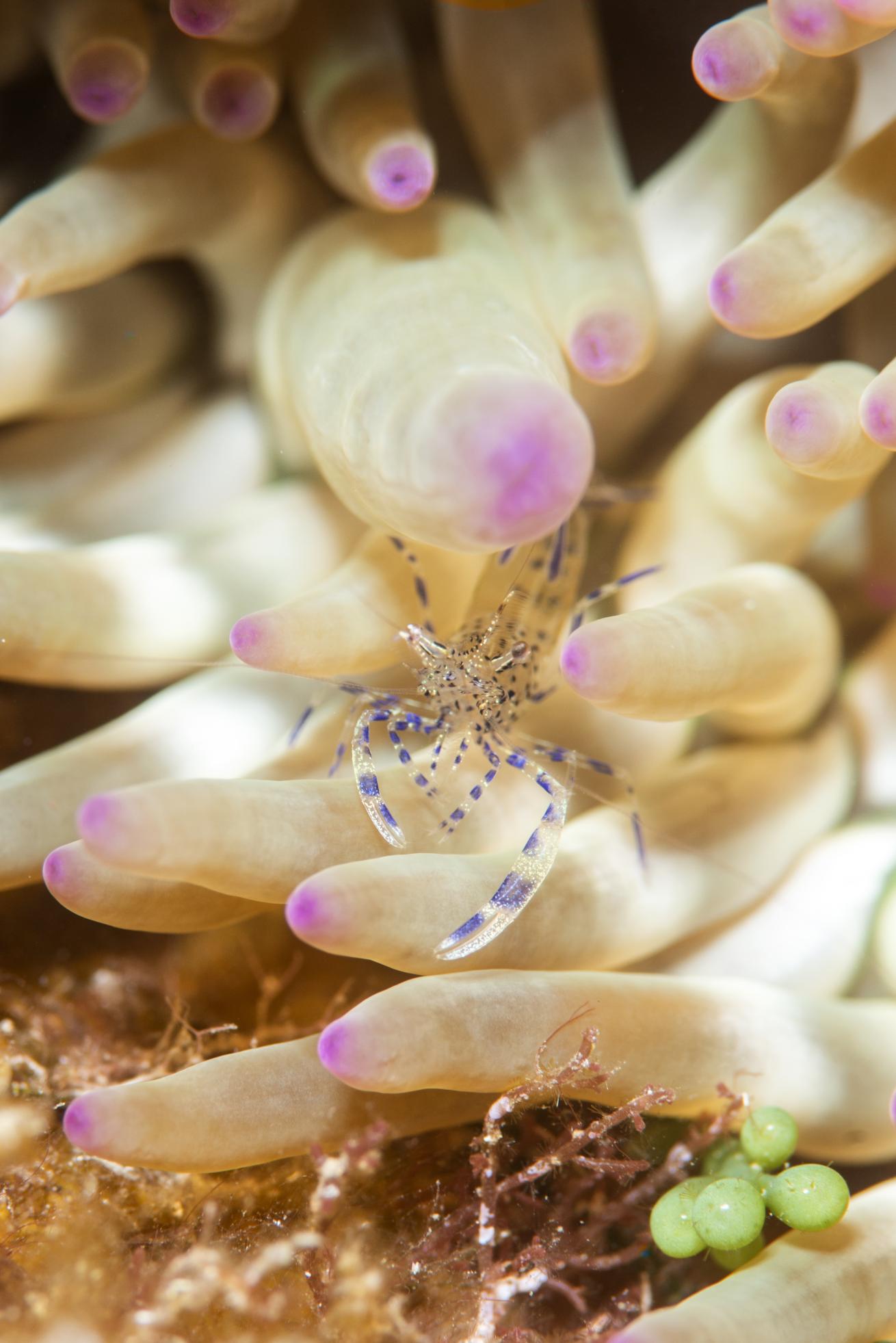
Richard AspinallAnemone shrimp.
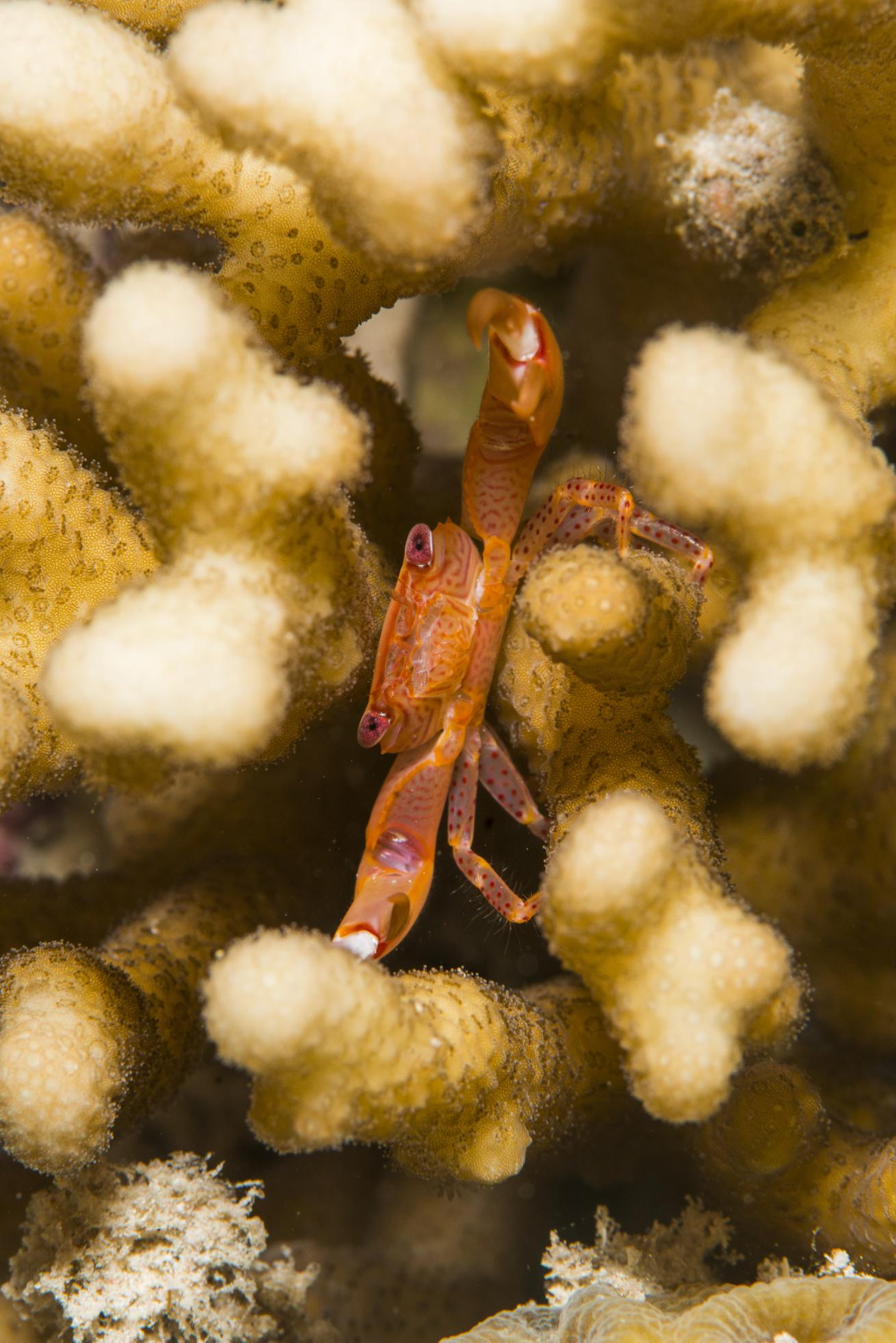
Richard AspinallCoral crabs may come close to the edge of the coral to wave their pincers at you.
A great time to capture crabs is during night dives, where they can make beautiful silhouettes. This is where your diving skills will be critical. Approach slowly and make sure not to damage the coral. Likewise, when shooting coral crabs, you may need to get close to the coral, so take care. No image is worth damaging the reef!
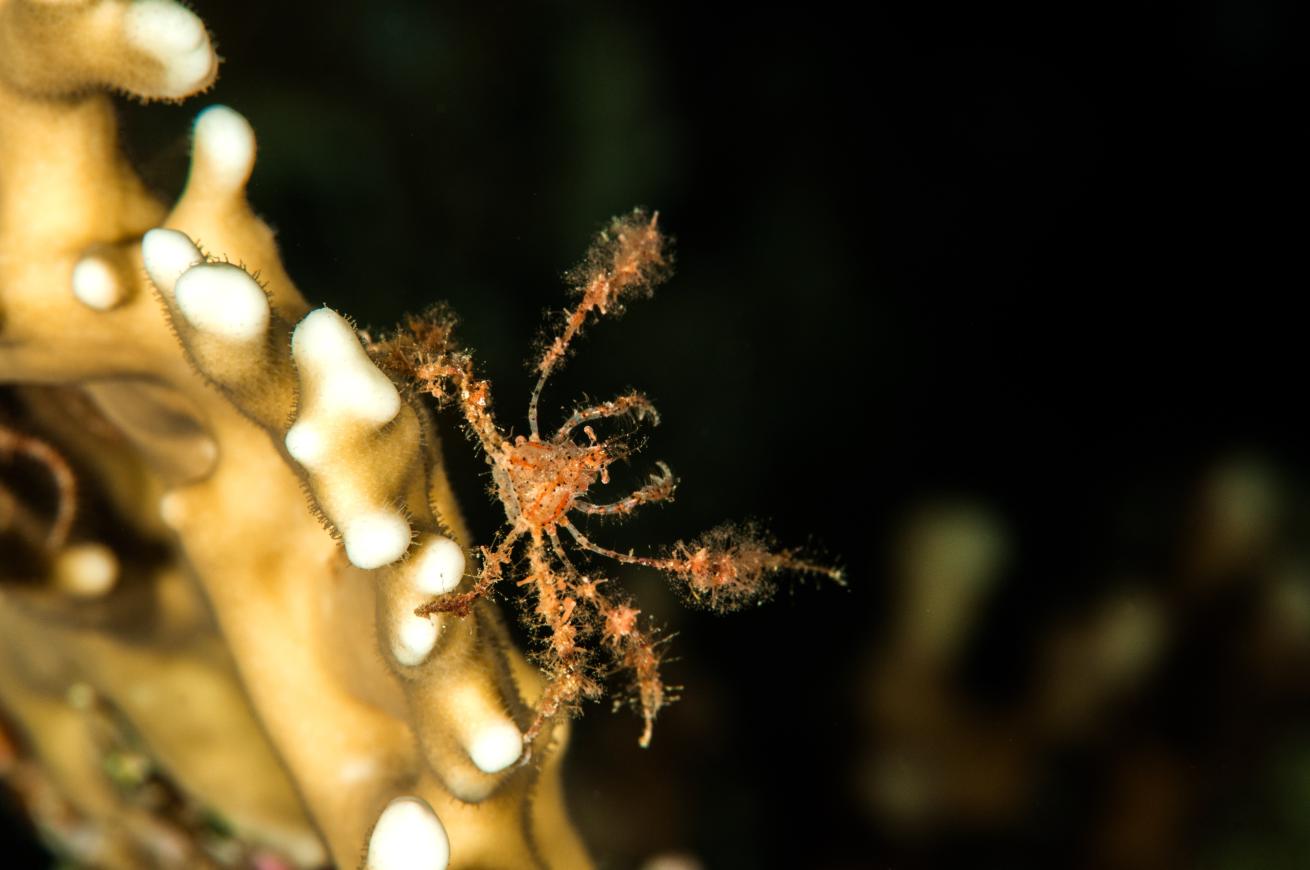
Richard AspinallThis crab is using its cloak of hydroids to capture passing food particles.
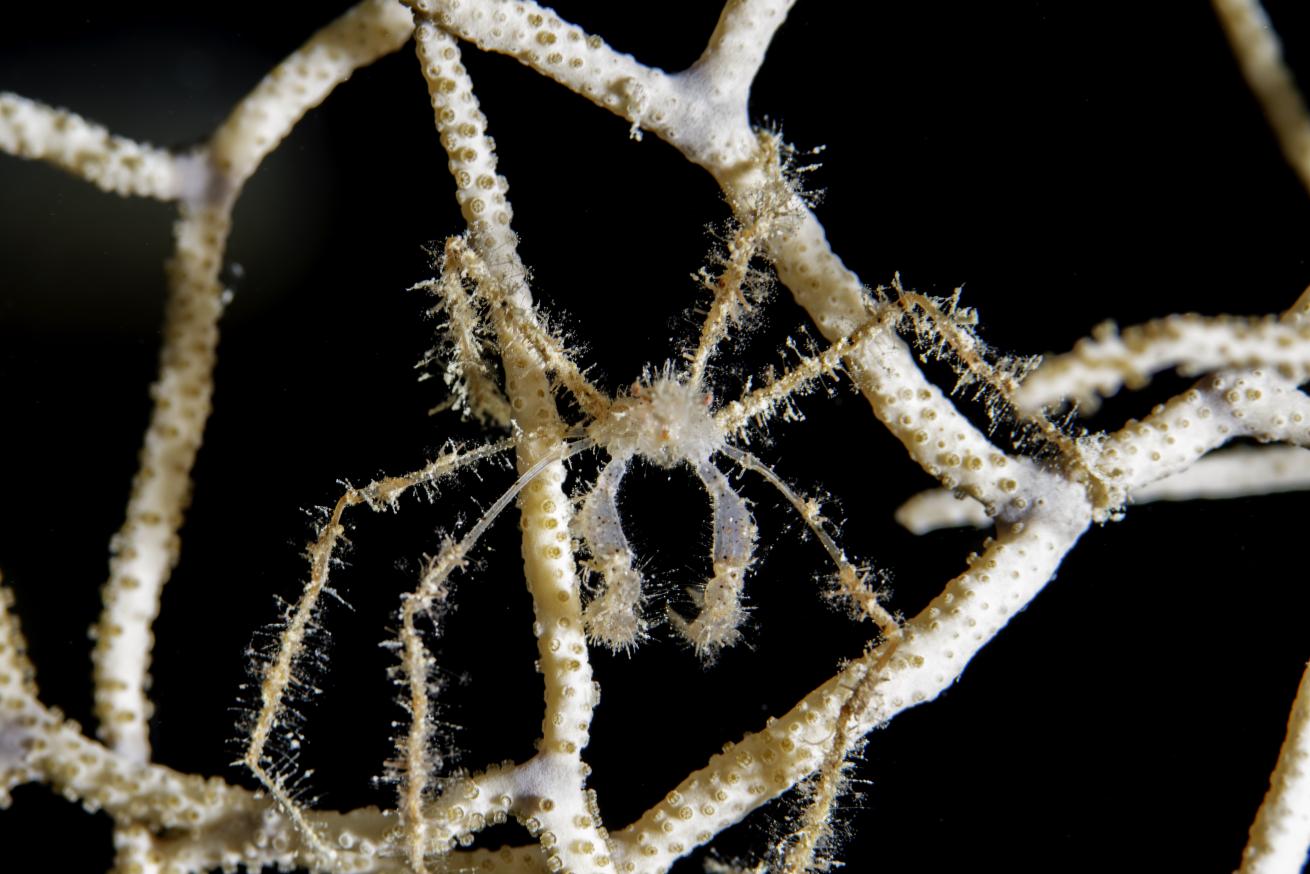
Richard AspinallCrabs can be a great subject for creative photography.
Specialist Crustaceans
Some crustaceans lead very specialist lives and are associated with other animals, from nudibranchs to feather stars. In this lucky image of a squat lobster, the animal sat amidst the center of an open feather star. They’re not normally this easy to find!
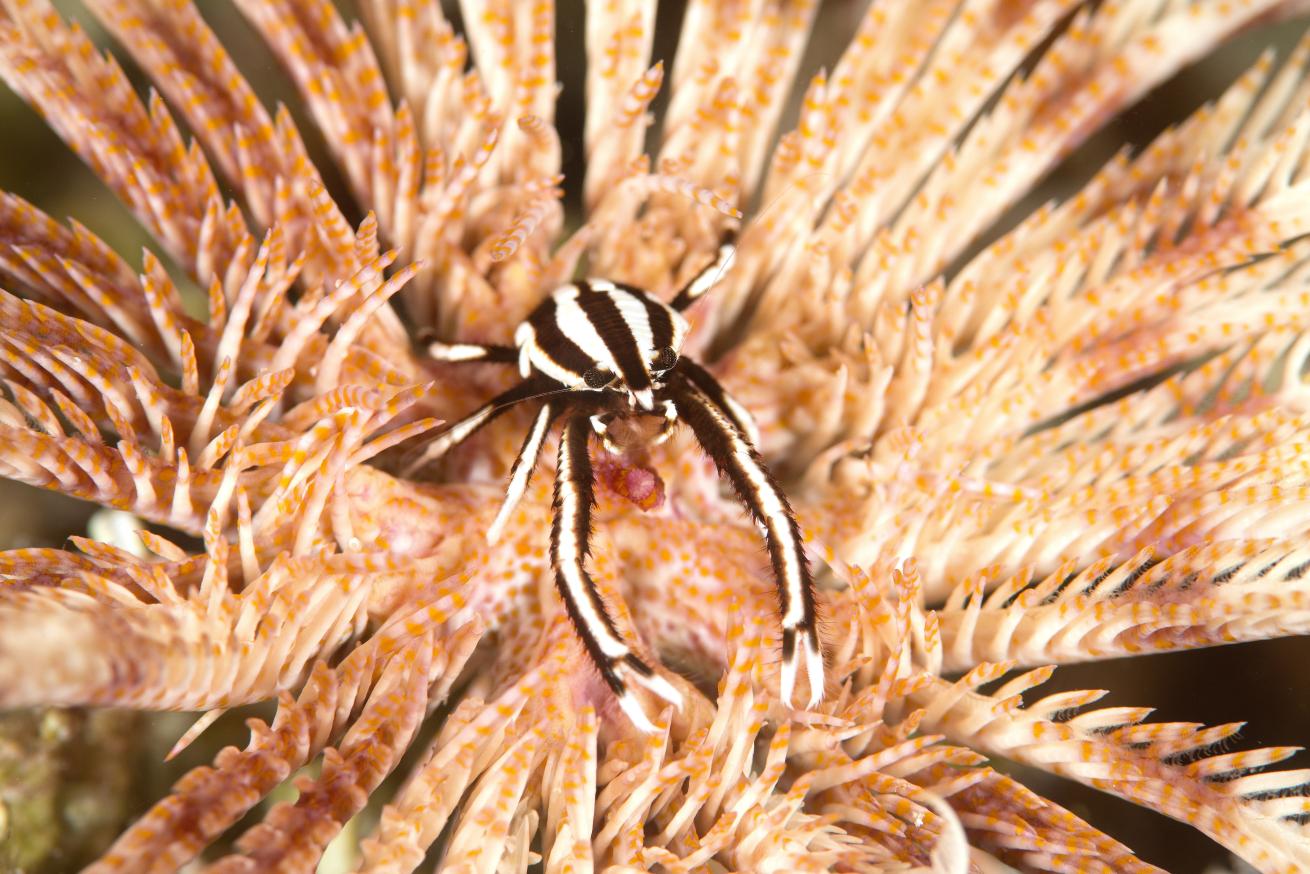
Richard AspinallA rare finding! A squat lobster inside a feather star.
Larger Crustaceans
Most crustaceans are on the smaller side of things, but there are exceptions. Larger animals like lobsters and crawfish are easily shot with standard settings on a compact camera.
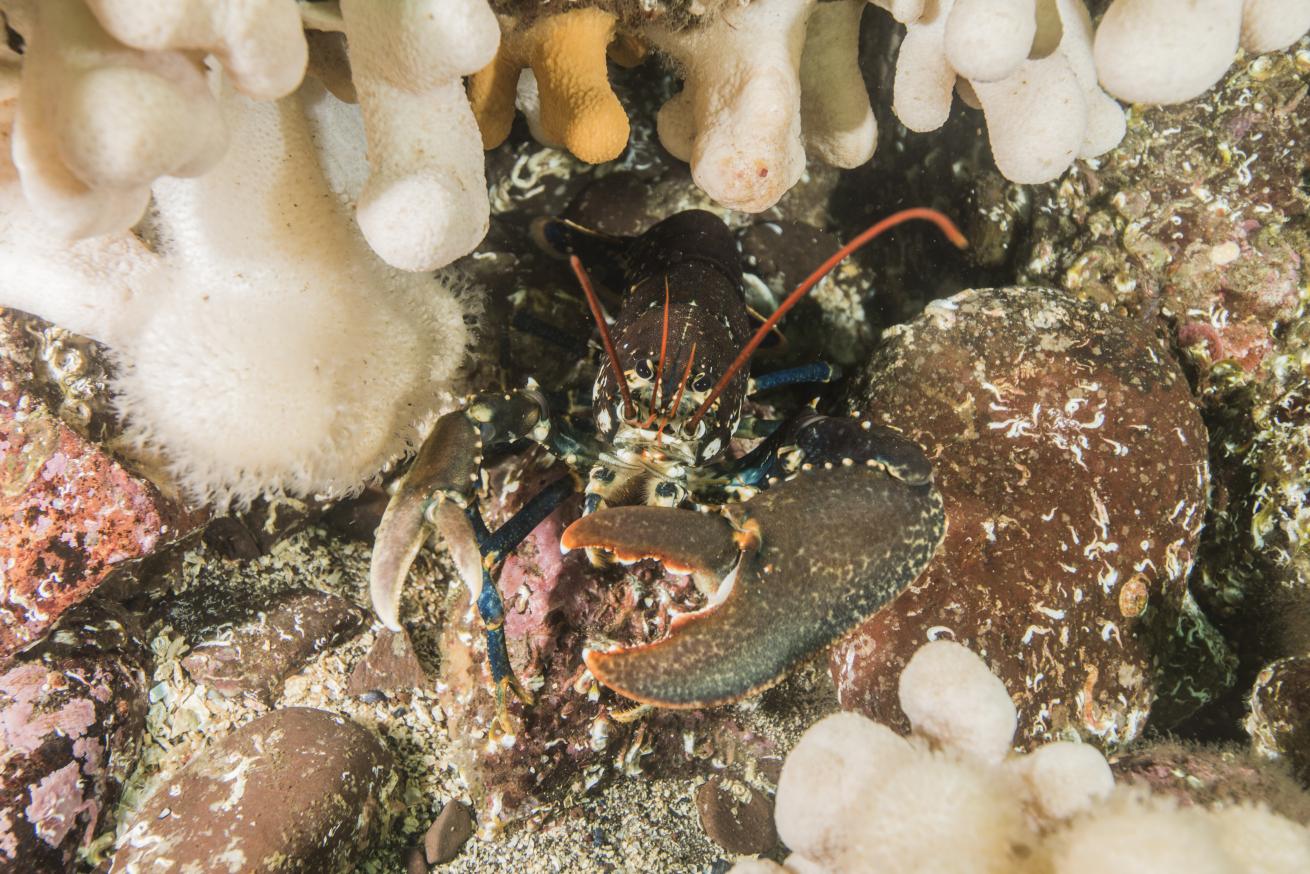
Richard AspinallA 16-35mm wide-angle zoom lens let me get close enough to this lobster.
Photographers using wide-angle lenses - be they fish-eyes or wide zooms - will easily be able to shoot a lobster, relying on the close-focusing ability of such lenses to get both the subject and the background in focus.
Crustaceans are everywhere – go get ‘em!

